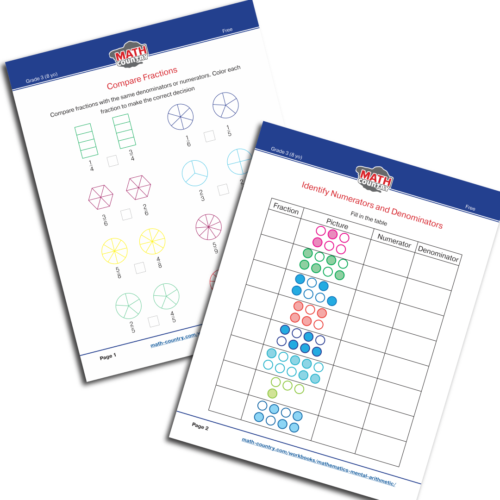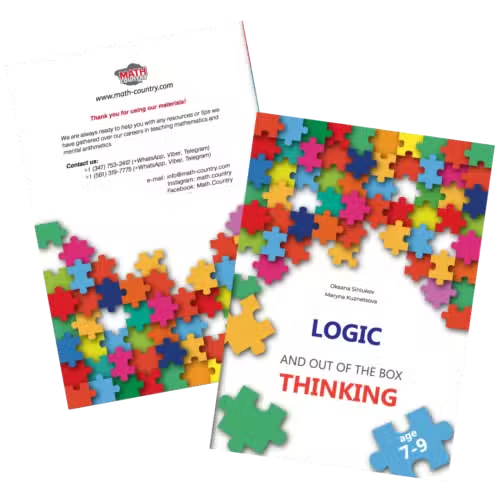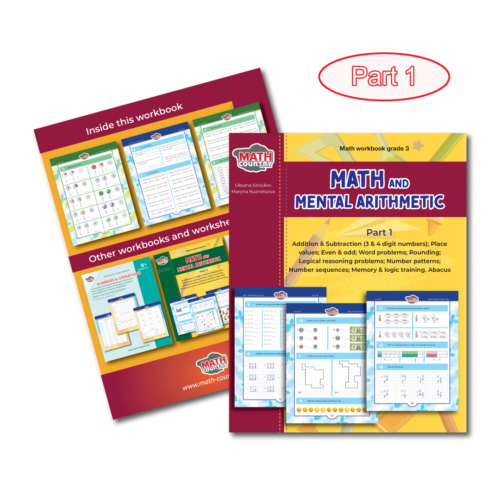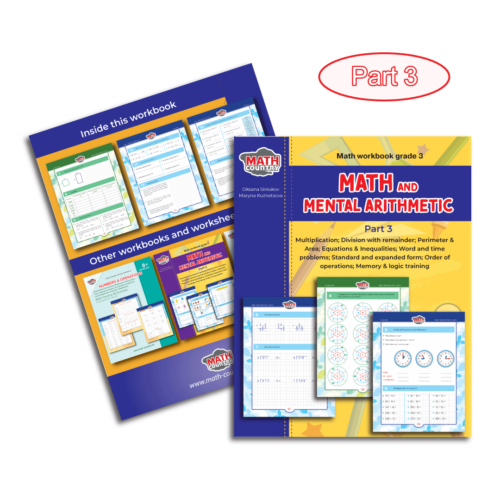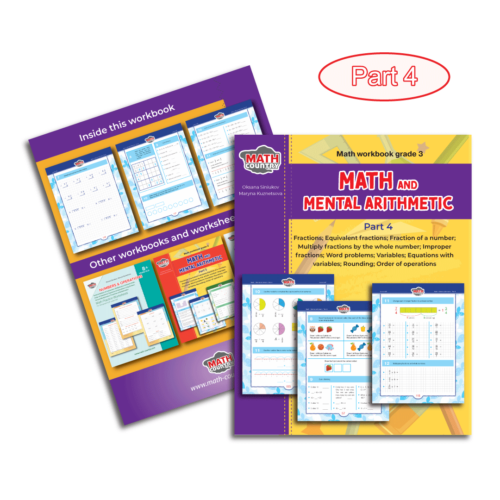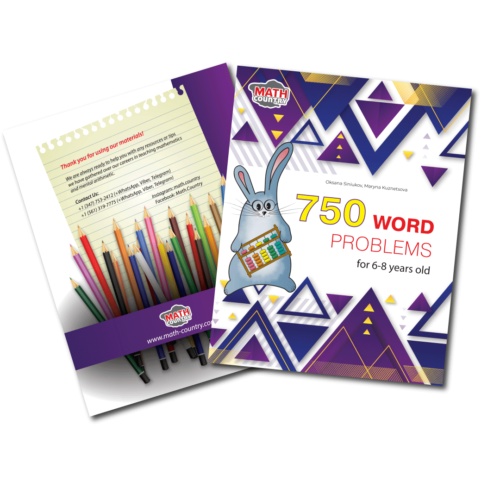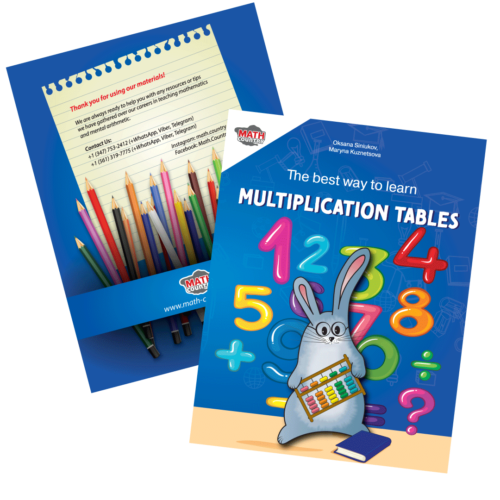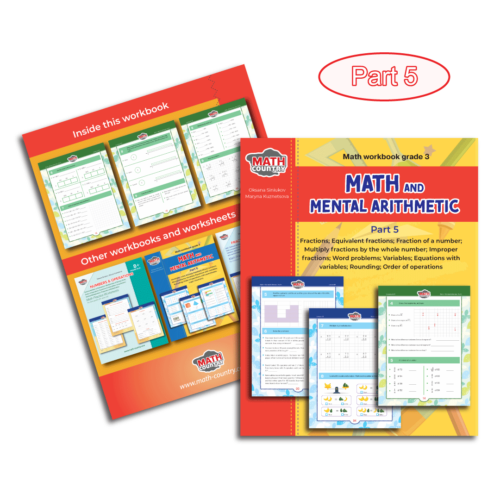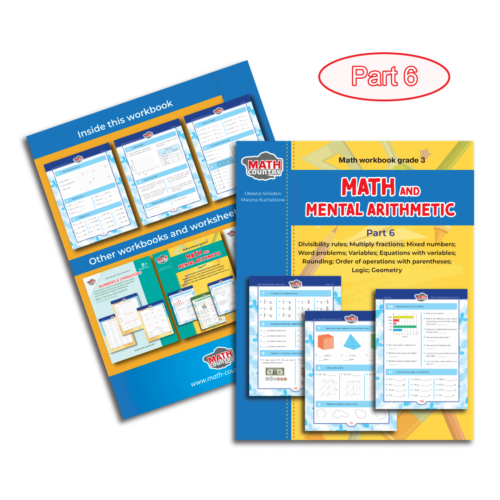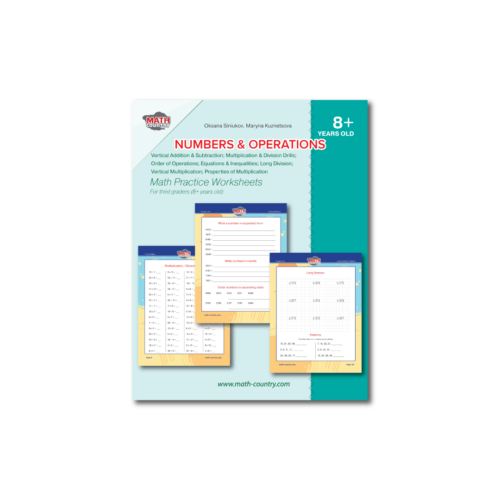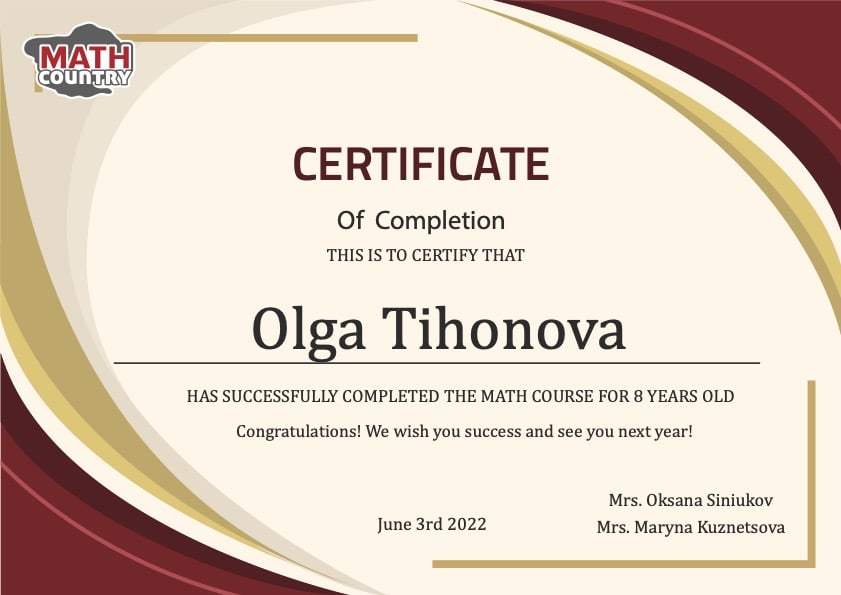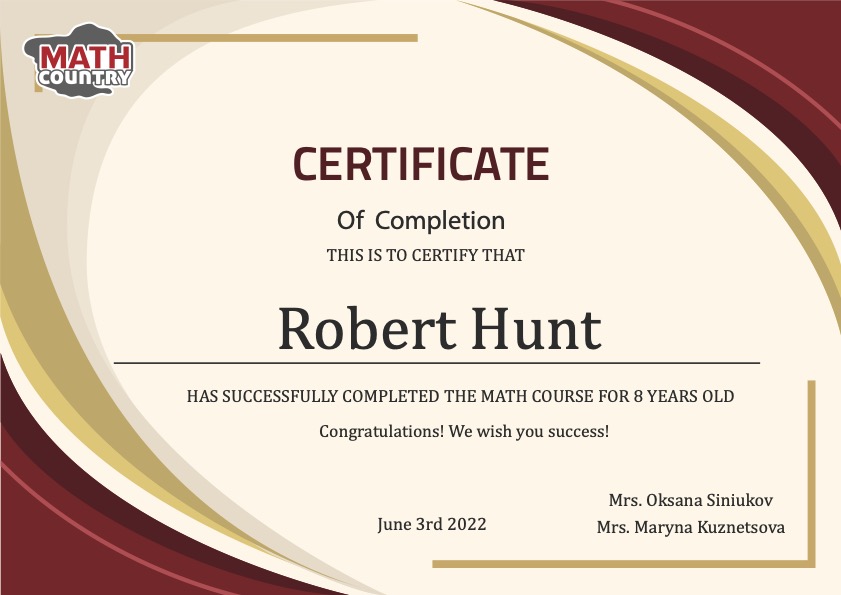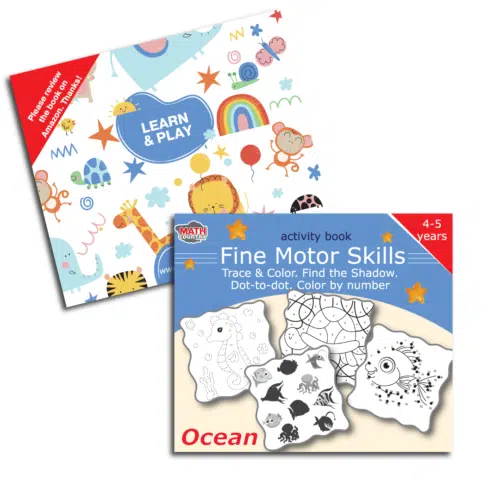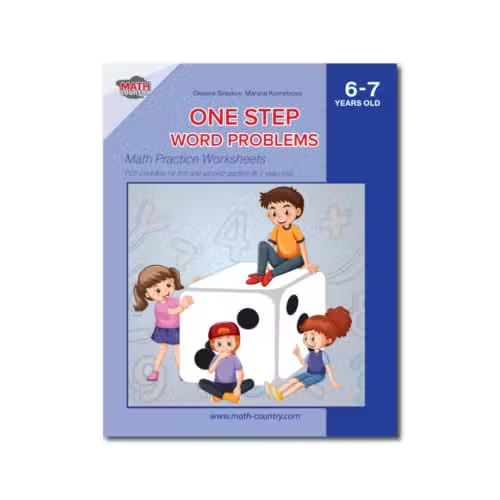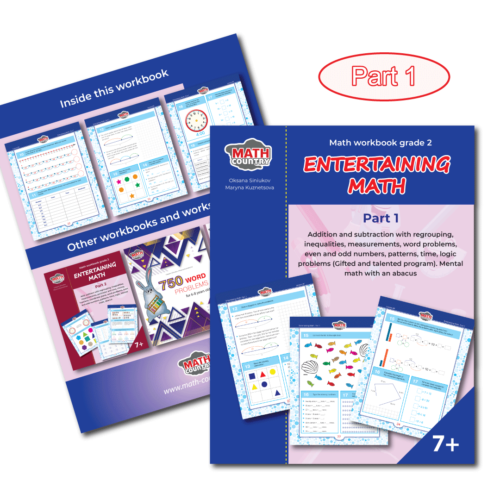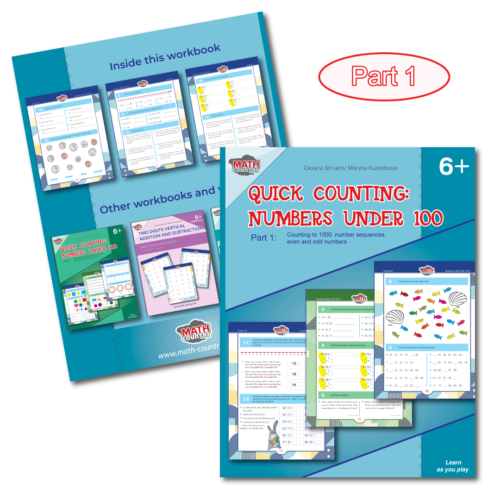Topic-related math worksheets for 3rd grade (age 8+)
These topic-targeted worksheets are extremely helpful in addition to the main series “Mathematics & Mental Arithmetic”.
You can use them together with any part of the “Mathematics & Mental Arithmetic” series or separately to improve the child’s skills in the chosen topic.
Also, these targeted worksheets help repeat and consolidate acquired skills after the child finishes the main book series and prepare them for a smooth transition to the next level.
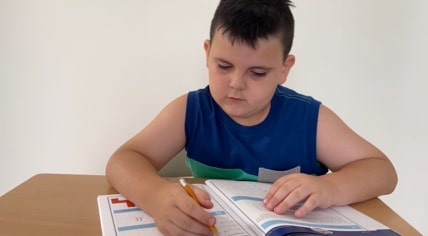
With our notebooks “Mathematics + Mental Arithmetic with no struggle” your kids will easily master the techniques for quick mental counting, will repeat and remember the multiplication tables, will learn how to multiply in a column, how to find the perimeter and area of a shape, and how to add and subtract three-digit numbers.
Math Country
Mathematics & Mental arithmetic (8+ y.o.)
Mathematics & Mental arithmetic (8+ y.o.)
Using our workbooks for 8 years old, students learn and practice utilizing basic mathematical knowledge to describe surrounding objects, processes, phenomena, assess quantitative and spatial relationships; practice the basics of logical and algorithmic thinking, spatial imagination, and mathematical speech, acquire the necessary computational skills; learn to employ mathematical knowledge and ideas to solve problems, gain initial experience in applying mathematical knowledge in ordinary situations.
Students achieve a deep understanding that a number represents a result of counting and measurement, acknowledge the decimal principle of noting numbers; learn to perform verbal and written arithmetic operations with numbers; determine an unknown component of an arithmetic expression; compose a numerical expression and calculate its value; gain experience in solving word problems; get acquainted with geometric shapes; learn, name, recognize and depict geometric shapes; acquire the methods of measuring lengths and areas.
Math Workbooks for 3rd graders (age 8+)
This is great instructional material for 3rd-grade math lesson plans. We have already organized all the materials and problems. Simply follow the instructions.
Classical series of workbooks in seven parts.
Overall, the “Mathematics and Mental Arithmetic” workbooks provide an excellent resource for educators and parents who want to guide children through a structured and proven math curriculum step-by-step.
For educators and parents who prefer a more traditional approach to teaching math, the “Mathematics and Mental Arithmetic” workbooks offer a comprehensive curriculum designed specifically for 8-year-olds. The series covers all essential topics at this age level, with each workbook divided into individual lessons accompanied by corresponding homework assignments.
The workbooks are structured to gradually increase in difficulty, starting with the most basic concepts and building upon them as the child progresses. This approach allows children to develop their math skills incrementally without feeling overwhelmed or frustrated by overly complex material.
While working with tables and diagrams, students acquire important skills for practice-oriented mathematical activities related to the presentation, analysis, and interpretation of data; learn to extract the necessary data from tables and diagrams, fill out forms, explain, compare and summarize information, draw conclusions and forecasts.
